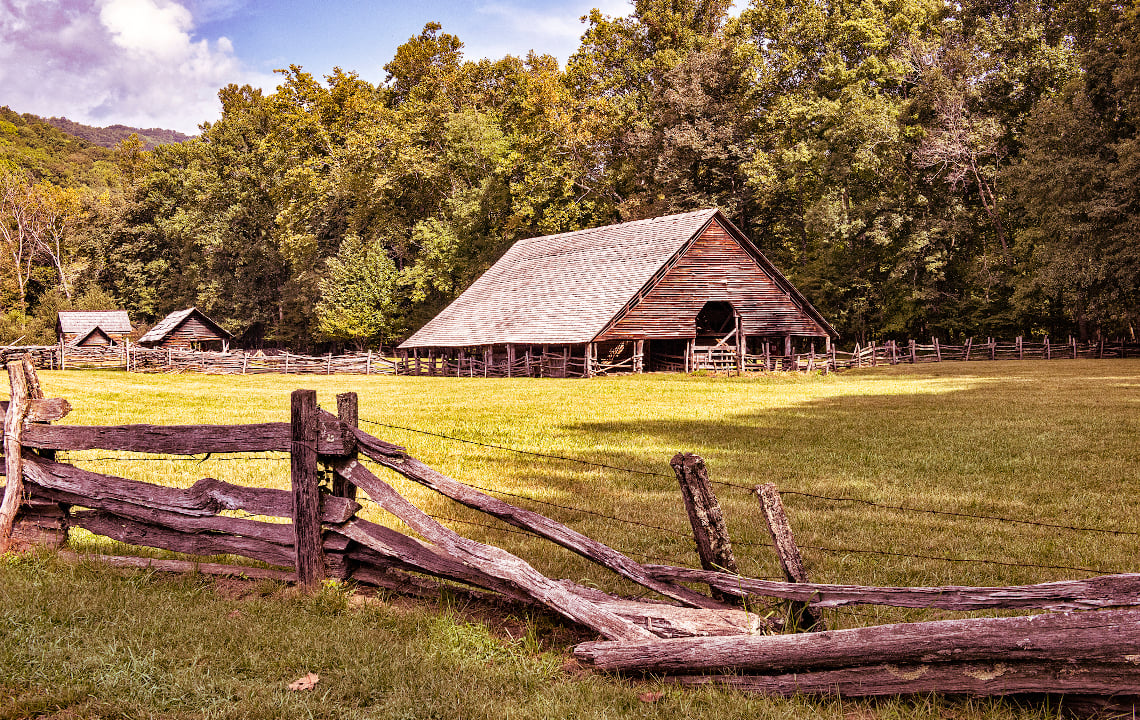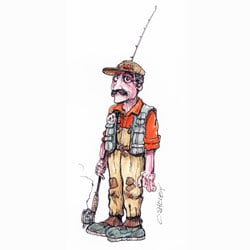Indulge in a rich story of yesteryear-homesteading, as author Jim Mize shares memories of visiting his Uncle Abe's off-grid farm 60 years ago.
Uncle Abe was the first person I remember knowing who didn’t work for someone else. He was self-employed, and his business was growing food for his family. In a way, you could say he ran a non-profit business because they ate what they grew and nothing went to waste.
His farm was a small plot of land at the end of a long dirt road. The road crossed a creek, so between the high water and slick ruts in the road after a rain, you had to visit on dry days if you didn’t want to get stuck.
I never heard the exact acreage he managed, but if I had to guess I would say about ten acres. Their cabin sat near the bottom end of it with the garden uphill.
Uncle Abe, my great-uncle, lived there with his wife, Aunt Susie, and their daughter. Aunt Susie managed the house, and every time I saw her, she was in motion cooking, canning or churning.
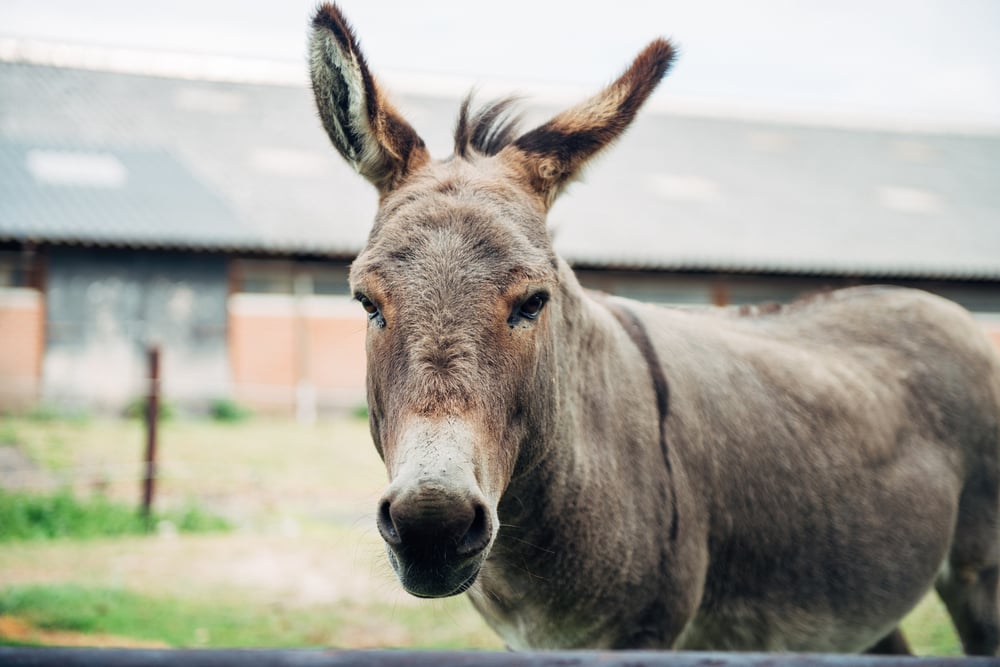
Visiting the farm was as much fun as going to a zoo.
Their livestock were mostly functional since each animal had to earn its keep.
Jane, the mule, had to pull a plow. Earl, the cow, provided milk and with churning from Aunt Susie, their butter. Uncle Abe always named his animals opposite their gender, so once you understood that quirk you could guess right on the gender of any animal on the farm.
As you might suspect by his inclination to naming animals, Uncle Abe had a unique sense of humor. I remember he always had a smile on his face and an infectious laugh that made you join in even if you didn’t get the joke.
Up in the vegetable garden, they grew everything they planned to eat. Each vegetable had its space and schedule.
For cash, they grew a small plot of burley tobacco that they mostly sold. A bit of it was dried for Uncle Abe’s use, and he kept a twist in the front pocket of his bib overalls. The rest of his stash hung on the fireplace mantle drying throughout the year.
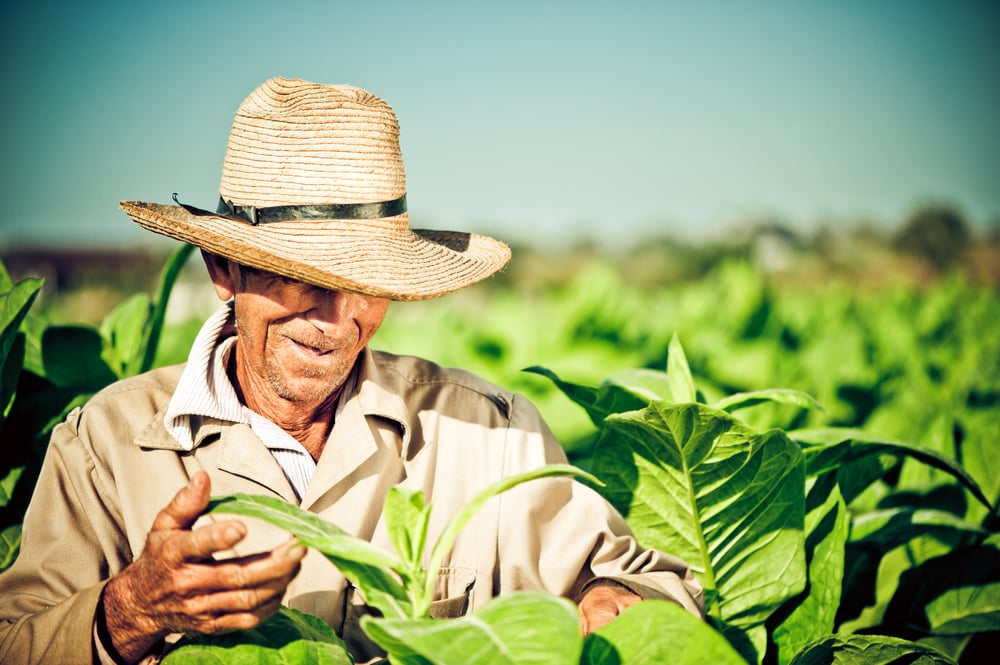
Commonly in those days, people in the country would raise one hog, sometimes two. Uncle Abe kept his in a pen up by the woods and fed it by-product from the garden. He would fatten it until the first frost and then butcher it for their use the rest of the year.
Even his dogs had a job, and that was hunting squirrels.
He kept a mixed breed of dogs of uncertain ancestry that we referred to as fice or feists, and on one occasion, we visited just after they had a litter of pups. They were roly-poly little things, mostly belly, feet, and sharp teeth that nipped at you when you played with them. Uncle Abe convinced my Dad I needed one so I came home from that visit with my first squirrel dog.
For refrigeration, they had a spring on the side of the hill behind the house. It was shaded by hardwoods and was cool enough to preserve milk and butter.
Guarding the spring were two ill-tempered geese that often chased visitors away. They seemed to have come to terms with the family, but I always gave them a wide berth.
The spring spilled out into a small creek that provided water for his livestock.
When we visited on holidays, we usually took along small gifts, practical items that would serve them well. Shotgun shells were a common gift for Uncle Abe. I suspect he put many squirrels and rabbits in the frying pan as a result.
In return, Aunt Susie would host a feast. The smells wafting from the kitchen taunted us until we were called to supper.
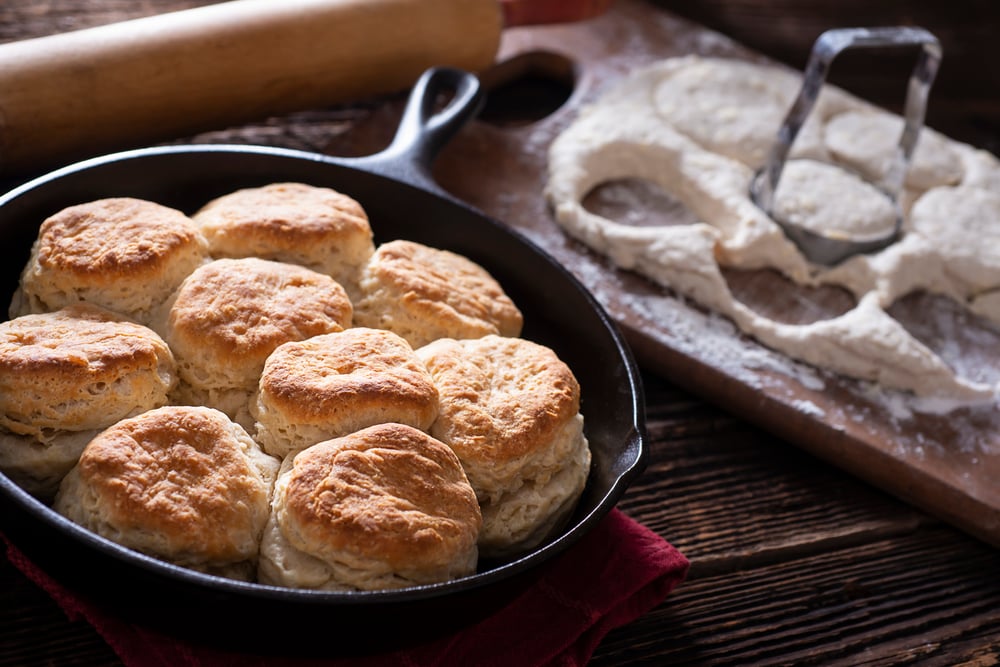
Canned cream corn, green beans and other vegetables filled the table. Sometimes the meat would consist of pork from the hog butchered every winter or other meats canned or cooked in their own broth.
The biscuits were the highlight for me as I covered them in fresh butter and a drizzle of sourwood honey.
I’m sure it was a hard life, but all I saw when I visited were the fruits of their labor.
After Uncle Abe got up in years, the family finally convinced him to move closer to town and take advantage of highways and modern life.
He couldn’t get the idea of retirement in his head, so eventually he got a job helping to take care of a school and the people in it. I can only picture the staff laughing at his jokes and even more at the way he laughed at them himself.
All of this took place more than sixty years ago.
That these images stand out in my head full of memories says a lot about what treasures they were.


